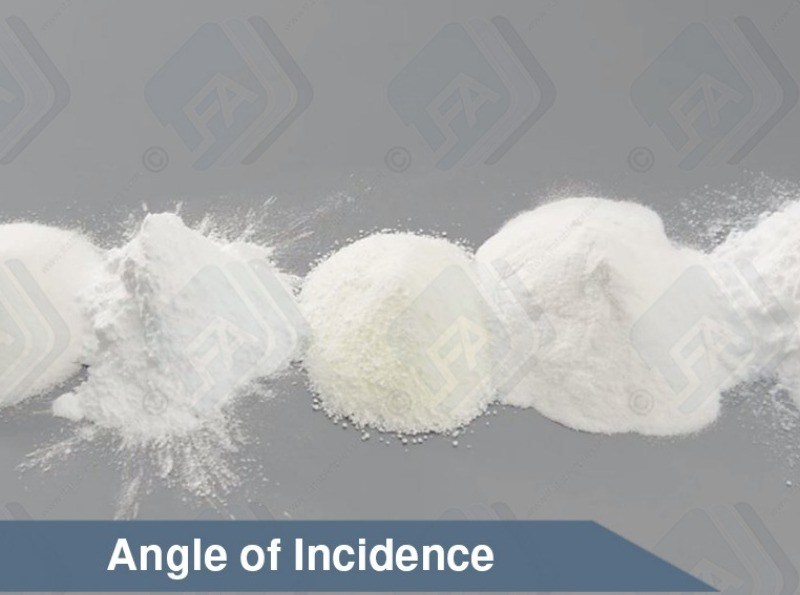Lactose em pó é um produto familiar para os consumidores. -Exibindo uma grande variedade de usos. Isso irá melhorar a cor do sabor, a textura e a raça do seu tablet e é geralmente ́.
Pó do Pharma grau à lactose é freqüentemente usado em comprimidos e exibindo a baixos níveis de impureza. É um hidrato de carbono que preenchê-lo é um dissacarídeo. Minutos para preencher é na classe de açúcares, que contenham dois resíduos de monossacarídeos. Torna-se cerca de 2-8% de leite, conforme determinado pelo peso. É um produto solúvel com um baixo nível de doçura. À lactose pó é claro e incolor e inerte. Isso pode melhorar a elementos de segurança de uma droga e torna o processo de fabricação mais suave.
à lactose é um carboidrato simples, encontrado no leite. Outro nome para isso é "açúcar do leite". É um açúcar redutor que preenchê-lo reage com aminoácidos em altas temperaturas. Isto pode determinar o sabor final. Quando à lactose pó é usado em um tablet, seria através do método de compressão direta. Pulverizador-secado à lactose e anidro são ambos capazes de formar um sólido comprimido sob compressão. Pharma grau é um pó fino, mas pode funcionar em conjunto com outros pós à lactose. Melhora o fluxo menor malha tamanhos torna mais fácil e mais eficiente e mais grosseiro do Bureau de mistura. À lactose pó também pode ser misturado com sacarose para criar açúcar misturas de revestimento.
a criação de vários Bureau de pó à lactose têm feito muitos avanços. Cada grau produzem uma forma ligeiramente exclusiva de pó à lactose. Este preenchimento pode ser mais específico com as propriedades de sua fórmula. Cada um destes Bureau diferentes têm diferentes métodos de fabricação. À lactose de grau farmacêutico é fabricada com uma concentração de soro de leite para saturar demais a lactose.
Vista a usuários finais devem ser tida em conta de controle de doenças a criação de um tablet. Lactose em pó é um ingrediente bem conhecido com muitos usos e é familiar para o consumidor. Uma questão a ter em conta é um consumidor que é intolerante a lactose. Seu consumo deste ingrediente pode resultar em cólicas, diarréia e flatulência.
Discursos de pó de lactosegrau farmacêutico para ser é armazenado em um lugar fresco e escuro. Temperatura deve permanecer abaixo de 27 graus Celsius e umidade abaixo de 65%, como alta umidade pode resultar em molde.
Este ingrediente é:-
- "GRAS" (geralmente reconhecido como seguro) se ordenou
- incluído no banco de ingredientes inativos FDA
- incluído no nonparenteral e parenterais pés licenciado no Reino Unido
constam os ingredientes Non-medicinal canadense lista de aceitável.
à lactose pó é um ingrediente amplamente aceitado, que é considerado seguro em todo o mundo. Melhorará a qualidade e o sabor do seu produto. e você vai encontrar um ingrediente que se encaixa perfeitamente em uma variedade de aplicações.
| Nazwa | Wartość |
|---|---|
| Numer CAS | 63-42-3 |
| Formuła molekularna | C12H22O11 |
| Forma | Biały proszek |
| Stan fizyczny | Stały |
| Przechowywanie | Przechowywać w temperaturze pokojowej |
| Temperatura wrzenia | 668,9 °C |
| Gęstość | 1,525 g/cm3 |
| Waga molekularna | 342,30 g/mol |
Yes, we have bulk pricing for all of our excipients, and these can be found in this section. We offer bulk in 500 kg, 1 ton, 2 ton and 5 ton lots. The prices are set on these quantities as these are the amounts that will fit on pallets.
here are 6 steps that should be followed as a general rule of thumb when cleaning contact surfaces that have come into contact with powders:
Dry Clean - First you need to remove as much of the dry powder as possible. You can do this using a hover/vacuum. Make sure that the vacuum you are using has a filter good enough to handle fine dust.
Wet Clean - Next you need to perform a wet clean. This can be done with warm water and soap or if available an ultrasonic cleaner.
Rinse - Next you need to rinse off any soap with potable water (drinking water). You do not have to do this if you used an ultrasonic cleaner in the last step. It is important to ensure that all parts are thoroughly dried immediately after washing to avoid any rusting.
Sanitise - Next you need to sanitise the surface. This step is recommended by the FDA. There are a number of sanitising solutions available designed to be applied and left on.
Lubricate - You now need to lubricate any parts that require it. This should be with the appropriate grade oil or grease considering your use and greasing chart. Store - Finally store any of the parts in a cool dry place. If you are storing them on the machine then make sure the machine is in a temperature controlled environment with low humidity.
Firmapress - 2 years form batch date.
Dextrose - 3 years from batch date.
Dicalcium Phosphate - 3 years from batch date.
Microcrystalline Cellulose -
Magnesium stearate -
Lactose - 2 years from batch date.
Silica Dioxide - 2 years from batch date.
Firmapress - 2 years form batch date.
Dextrose - 3 years from batch date.
Dicalcium Phosphate - 3 years from batch date.
Microcrystalline Cellulose -
Magnesium stearate -
Lactose - 2 years from batch date.
Silica Dioxide - 2 years from batch date.
Dextrose - approx 100 mesh
Dicalcium Phosphate - approx 100 mesh
Microcrystoline Cellulose - approx 120-200
Magnesium sterate -
Lactose - 80 mesh
Silica Dioxide -
Firmapress - 100-200 mesh
Yes, all of the excipients are safe for human or animal consumption. There are some precautions that should be taken when handling them and there are some people that might have intolerances to some of them. Information on this can be found in the products MSDS and Intolerance Data Sheet. This can be found in this section for every excipient.
Yes, it does not matter what age, size or sex the person consuming the products is. It is, however, important to check the intolerance data.
Yes. CoA stands for Certificate of Analysis this is also known some times as an MSDS (Material Safety Data Sheet) all of the information contained in a CoA is inside the MSDS for every LFA product which is emailed to you after purchase.
Dextrose - Sweetener, binding agent, good for chewable tablets or candy.
Microcrystalline Cellulose - Binder, filling agent. Good at binding tablets and making them bigger. It can also be used as a filler for capsules.
Magnesium stearate - Dry Lubricant. This stops products from getting stuck to the tooling. It can also help with powder flow issues and caking issues.
Lactose - Binder, sweetener and bulking agent. It has a large mesh so it flows well but most people do not like it because of the intolerance issues.
Silica Dioxide - Flowing agent. This assist powders in flowing smoothly through the machines. It also helps with cacking issues where powders get stuck to the machine.
If your product or API is clumpy then you will need to add an anticaking agent. For this, we recommend silicon dioxide. We only recommend adding a maximum of 2% of this to the mix
If your product is sticky then you will need to add a dry lubricant to your mix. For this, we recommend magnesium stearate.
We do not recommend that you add more than 1% to the mix as more than this can cause capping. If your product is still sticky at this point then we would recommend looking into granulation.
If your product does not bind well then we would recommend using MCC. This can be used in any % the limiting factor is the size of the tablet.
If the amount of MCC you would have to use would be too much or if you do not want to use MCC then you have 3 other options: Ask your supplier for a directly compressible or tabletable grade of your product. Spray dry your product. Wet granulate your product.
Yes. There are two things at play here. You can get hygroscopic and hydrophobic excipients. Hygroscopic means that they take on water quickly, while hydrophobic means that they repel water.
There are products know as supper disintegrants. These products help the breakdown of tablets. At the moment LFA does not sell any supper disintegrants.
Magnesium stearate is hydrophobic this means that it will slow the breakdown of a tablet.
However, it is used in such small amounts that most of the time it will not make a difference to our customer's products. If they would like to be sure then they should conduct what is known as a disintegration test.
Yes, there are all of them can be found in the intolerance sheets for each product. The intolerance sheets can be found here: https://www.lfatabletpresses.com/product-data
FFFFFF 







